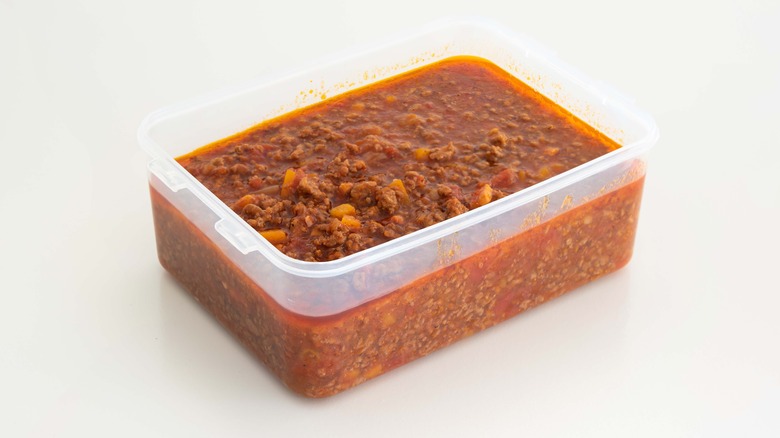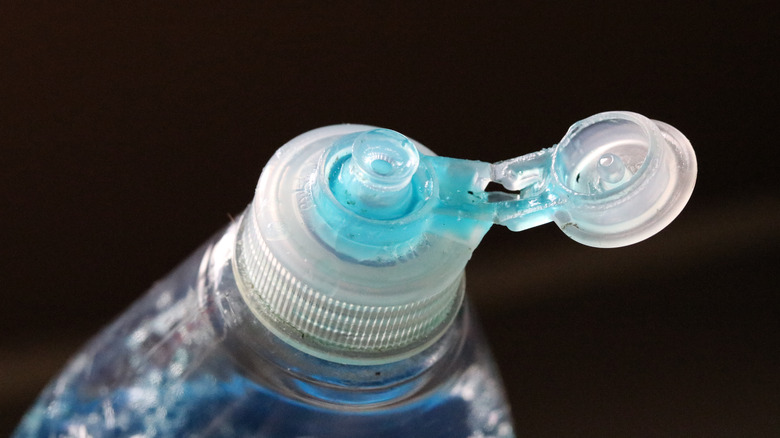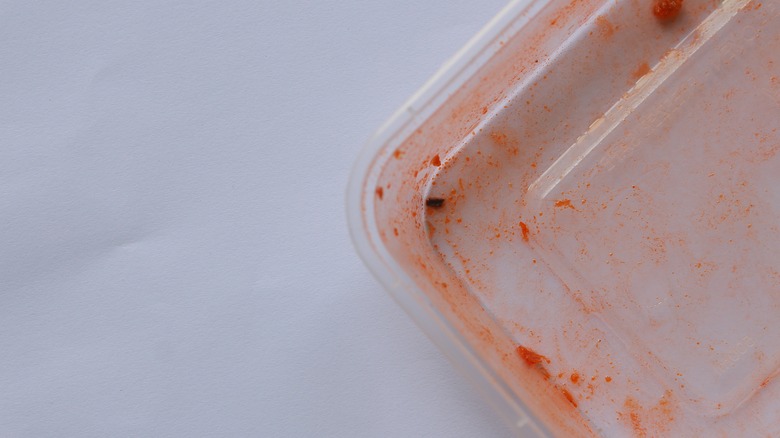The Easiest Way To Remove Tomato Stains From Your Favorite Food Containers
Pasta dishes are a staple in most homes. They are delicious and easy to make, they go a long way to feed a lot of people, they can be changed up to add variety, and they are usually cheap. Even dishes like Spaghetti With Tomatoes and Goat Cheese, Zesty Italian Pasta Salad, and Greek Style Beef Skillet may sound overly complicated, but they really aren't.
Another positive to a great pasta dish is that you can store the sauces to have leftovers or for use in other dishes. If you have ever stored tomato sauce in your plastic storage bowls, though, you will notice one major downside to doing so — they often stain the container. You can spend hours soaking and scrubbing the Tupperware to get the stains out to no avail. Who wants that? If you have given up on removing tomato stains from your containers, we have the secret to the easiest way to remove those stains.
Making a paste to combat sauce stains
So, what's the secret to removing stuck-on, stubborn tomato stains? According to Martha Stewart, it's relatively easy and involves items you probably already have in your kitchen — dish soap, water, and baking soda. This recipe does not specify a certain type of dish soap to use, but according to Apartment Therapy, the blue Dawn dish detergent is the fan favorite for removing stains of all kinds.
To make this magic, stain-fighting paste, simply blend one teaspoon of water, ¼ teaspoon of dish soap, and two tablespoons of baking soda. It's best if you mix the paste right in the stained container, scrub it around, and then let sit for 15 minutes. You may want to leave the paste on longer if the stains have really set in. After you have given the paste time to do its magic, you scrub it some more, then rinse. You can repeat the process if necessary.
How to avoid staining your containers
Want to avoid staining your plastic containers altogether? You can store your tomato sauce and tomato-based dishes in glass containers or Corningware. There are many types of containers available for all of your food storage needs. The pasta company Barilla says that cooked pasta that has not been mixed with sauce should be tossed with olive oil to keep it from sticking together. Then, it needs to be stored in an airtight container in the fridge. You should eat the pasta within two days.
If you want to save it longer than two days, you can store pasta and sauces in Ziploc freezer bags to freeze them, just make sure you get all of the air out before sealing the bag. If you have stored pasta with the sauce, Barilla recommends reheating it in the microwave or in the oven. Plain pasta can be reheated in a skillet or you can boil water and add the pasta to it for 30 seconds, then drain and enjoy!


